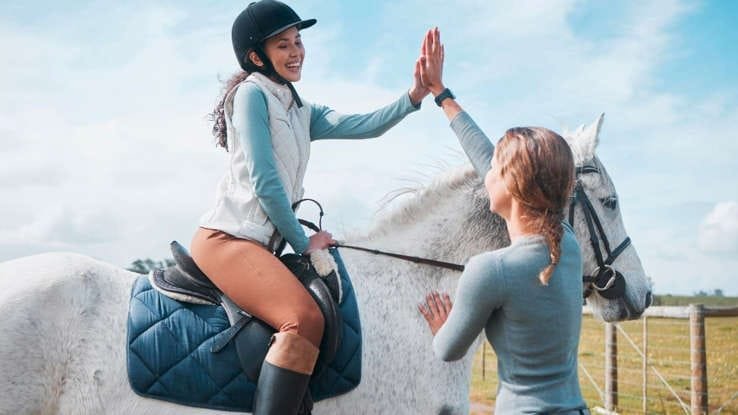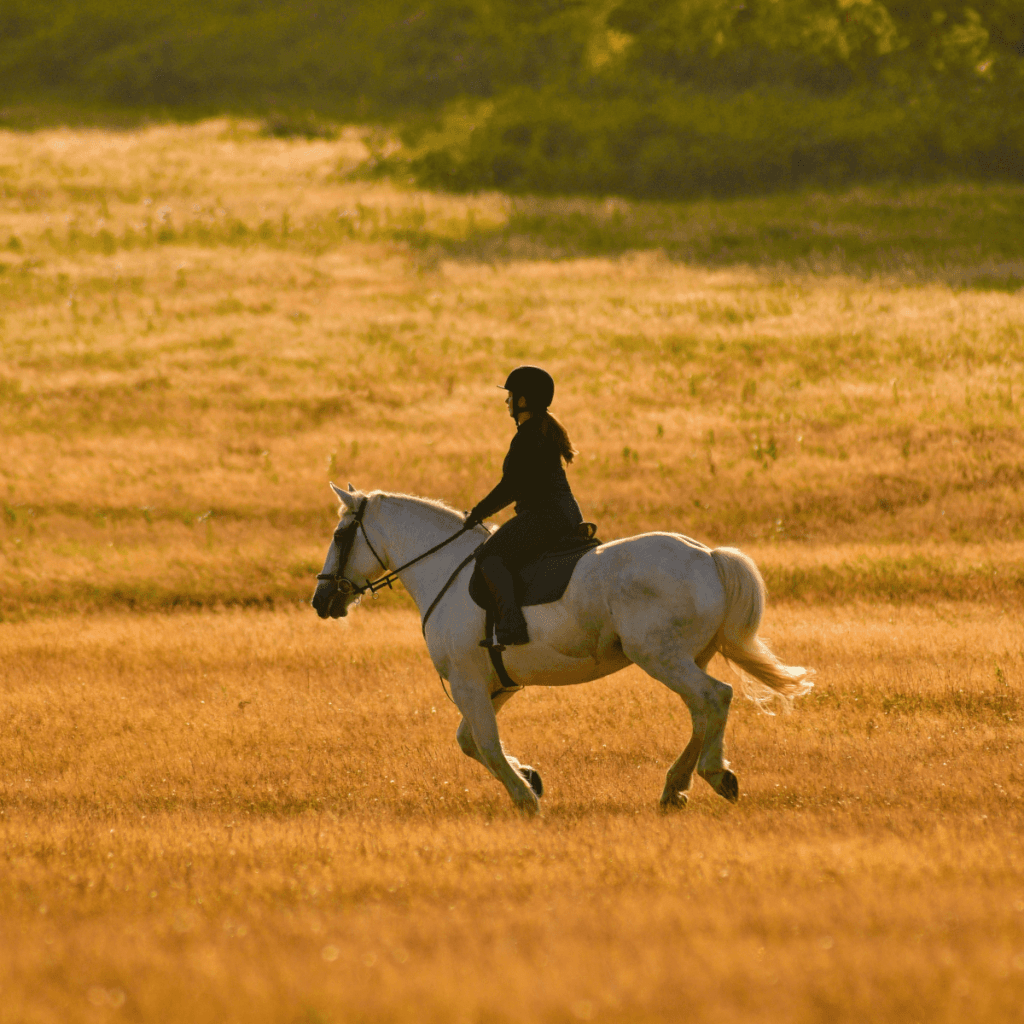As an equestrian, understanding the terminology associated with riding and horse care is essential for effective communication and training.
Whether you’re a beginner or a seasoned rider, familiarizing yourself with key equestrian vocabulary will enhance your riding experience and improve your connection with your horse. Here’s a list of important terms every rider should know.
1. Basic Riding Terms
Aids
The signals used by the rider to communicate with the horse, including legs, hands, voice, and seat.
Gait
The different ways a horse moves, including walk, trot, canter, and gallop. Each gait has its own rhythm and speed.
Mount
To get on a horse, typically from the left side.
Dismount
To get off a horse.
Rein
The strap used to guide and control the horse, typically attached to the bridle.
2. Horse Anatomy
Croup
The top part of the horse’s hindquarters, between the back and the tail.
Withers
The ridge between the shoulder blades, often the highest point of the horse’s back.
Muzzle
The area of the horse’s face that includes the nose and lips.
Fetlock
The joint located just above the hoof, often where a tuft of hair grows.
Hoof
The hard covering on the bottom of the horse’s foot, crucial for health and soundness.
3. Equipment and Tack
Saddle
The padded seat placed on a horse’s back for riding.
Bridle
A piece of equipment that includes the reins and bit, used to control the horse.
Girth
The strap that holds the saddle in place under the horse’s belly.
Stirrups
The footrests attached to the saddle that help the rider maintain balance.
Bit
A piece of metal placed in the horse’s mouth as part of the bridle, used for control.
4. Training and Riding Techniques
Lungeing
A training method where the horse is exercised in a circle at the end of a long line, helping to build fitness and obedience.
Collection
A movement in which the horse shortens its stride and shifts weight to its hindquarters, enhancing balance and responsiveness.
Extension
A movement that involves lengthening the horse’s stride for a more forward and powerful gait.
Cross-Training
Incorporating different disciplines or exercises to improve a horse’s overall performance and reduce monotony.
Flatwork
Basic riding exercises performed on the flat, focusing on improving the horse’s movement and responsiveness.
5. Common Riding Disciplines
Dressage
A discipline focused on the horse’s ability to perform precise movements and patterns, showcasing training and partnership.
Jumping
A discipline where riders guide their horses over obstacles, focusing on technique, speed, and agility.
Eventing
A combined discipline that includes dressage, cross-country jumping, and show jumping.
Western Riding
A style of riding characterized by specific saddles and equipment, often associated with ranching and rodeo events.
Endurance Riding
Long-distance riding, focusing on the horse’s stamina and the rider’s ability to manage the horse over various terrains.
6. Horse Care Terms
Colic
A term for abdominal pain in horses, which can be serious and requires veterinary attention.
Laminitis
A painful condition affecting the hooves, often caused by metabolic issues or improper feeding.
Farrier
A professional who specializes in hoof care, including trimming and shoeing horses.
Grooming
The process of cleaning and caring for a horse’s coat, hooves, and overall appearance.
Vaccination
Preventative medical treatment to protect horses from various diseases.
Having a solid understanding of equestrian vocabulary is crucial for effective communication and a successful riding experience. Whether you’re discussing training techniques, horse anatomy, or care practices, being familiar with these terms will enhance your confidence and ability to connect with both your horse and fellow riders. As you continue your equestrian journey, keep expanding your vocabulary to deepen your knowledge and skills in the sport.




